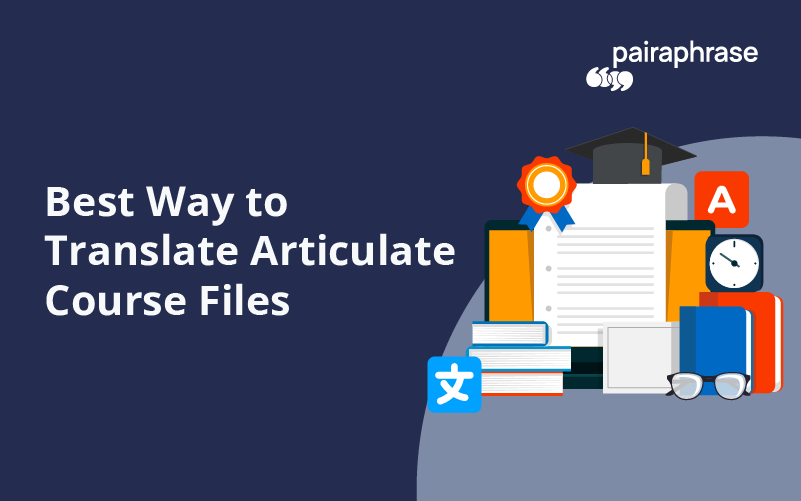Looking for the best way to translate Articulate course files (XLIFF 1.2 and XLIFF 2.0) for Storyline 360 or Rise? Haven’t had much luck? As seasoned veterans of the translation industry, we’re not surprised.
There are multiple roadblocks people commonly encounter when attempting to translate Articulate courses for Rise and Storyline. Especially when it involves translating XLIFF 1.2 and XLIFF 2.0 files. Fortunately for you, we’re going to help.
Continue reading to learn the best way to translate an Articulate course file so that you don’t need to deal with these issues. We also recommended a software solution at the end of this post.
5 Tips to Localize an Articulate Course File Efficiently
1. Translate Articulate files with professional translation software
First off, the best way to translate an Articulate course file is to stick to professional translation software. This is because premium software platforms are more likely to have compatibility with Articulate documents. Compare this to free translation tools, which are limited.
While there aren’t many translation software programs that translate an Articulate file for you easily, they do exist.
2. Leverage artificial intelligence (AI)
What’s more, depending upon the professional translation software you choose, it might include Translation Memory and Dynamic Machine Learning. This AI technology will enable you to reuse previously-translated Articulate course text to perfect future translations.
It’s perfect for eLearning courses that require periodic content updates.
Translation Memory enables you to edit first-draft machine translations and simultaneously train your software so that it learns your company’s phrases and sentences. This eliminates the need to ever translate the same or similar content twice.
Not only that, but Dynamic Machine Learning automatically replaces repetitive instances of a phrase within a file, the moment you edit a segment within the Translation Editor.
Translation Memory and Dynamic Machine Learning will save you a lot of time and will help you continuously improve your translation quality, the more you use the software.
3. Choose translation software optimized for XLIFF 1.2 and XLIFF 2.0 files
Aside from finding localization software with XLIFF 1.2 and XLIFF 2.0 compatibility, a common issue regarding Articulate file translation involves retention of the HTML tags. Many software systems have trouble translating the language of an Articulate course’s text segments while keeping the HTML in place.
Because Articulate files in the XLIFF 1.2 and XLIFF 2.0 format can include tags if you select “Include HTML formatting” upon exporting an XLIFF file, you need translation software that is optimized for parsing XLIFF 1.2 and XLIFF 2.0 files. Fortunately, our software recommendation meets this requirement.
4. Hire a translator to check for accuracy & cross-cultural mistakes
It’s important to note that no matter what translation software you use, you should hire a translator (or ask a bilingual colleague) to check your Articulate course file translations for accuracy.
While translation software is quite powerful, it still runs on machine translation. And machine translation isn’t perfect--sometimes even for certain phrases you’d think would easily translate.
Idioms, slang and certain cultural references likely won’t be relevant or appropriate for the audience reading your translated material. With all that being said, you should always choose professional translation software that allows for collaboration and post-editing of the first-draft machine translated file.
Soon, you’ll know exactly where to look for that perfect platform.
5. Localize Articulate courses securely
When you translate an articulate storyline, it’s important you use a secure platform. The software you choose should have enterprise-level security.
This will protect not only sensitive or confidential eLearning content, but also your personal information. Look for a platform that’s HIPAA compliant, with security measures such as multi-factor authentication, ongoing vulnerability scans and penetration testing part of their security process.
Best Way to Translate Articulate Courses with Translation Software
The best way to translate an Articulate course file with translation software is to use Pairaphrase. It enables you to easily follow the tips listed above, and features all the technology and compatibilities we suggested in this post.



.png)

.png)



